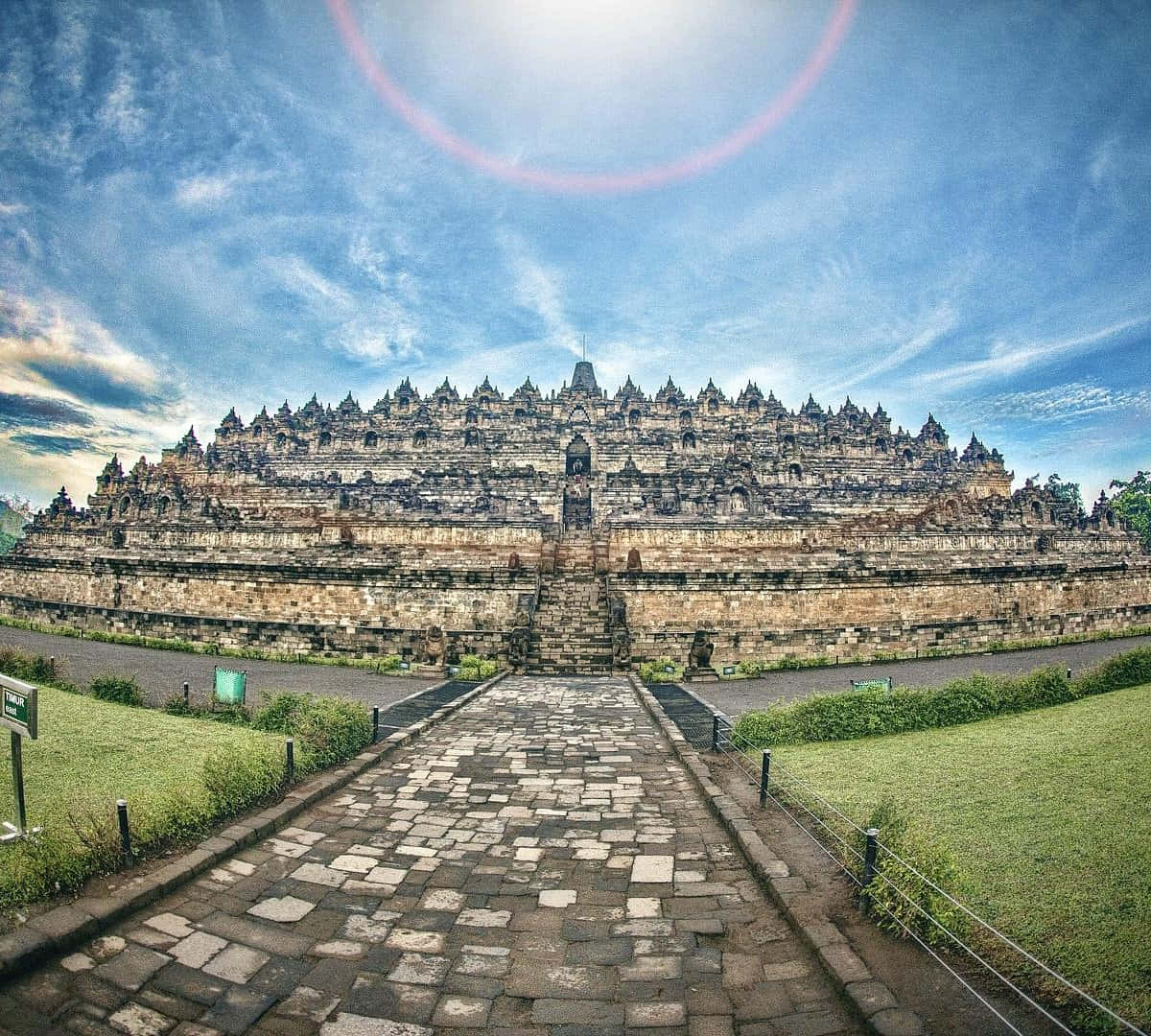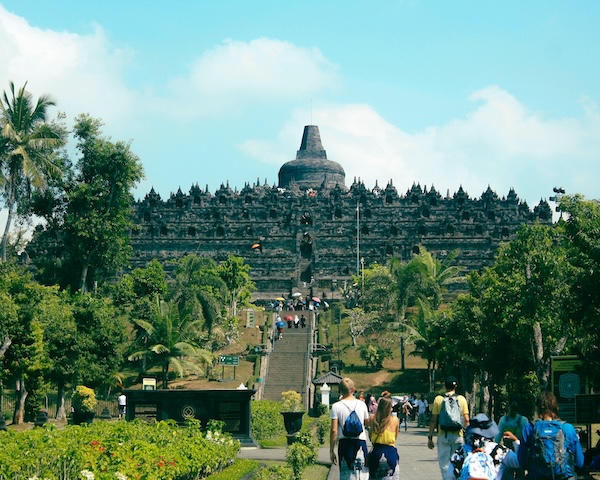Imagine a landscape where ancient whispers mingle with the rustling of emerald rice paddies, where the silhouette of a colossal temple rises majestically against a canvas of fiery dawn, framed by the misty peaks of distant volcanoes. This isn’t just a postcard fantasy; it’s the profound reality awaiting you in Central Java, Indonesia. While the UNESCO World Heritage site of Borobudur Temple often takes center stage, an equally enchanting, yet often overlooked, experience lies in the tranquil exploration of its surroundings. Get ready to discover the magic of Borobudur temple nature walks, an immersive journey that connects you deeply with both spiritual heritage and the breathtaking natural beauty of this sacred land.
Introduction: Where History Breathes and Nature Flourishes
Borobudur, the world’s largest Buddhist temple, is an architectural marvel, a testament to human ingenuity and devotion. Its intricate reliefs tell tales of enlightenment, drawing pilgrims and travelers from across the globe. But what if your journey didn’t end with ascending its terraces? What if you could step off the well-trodden path and truly feel the pulse of this ancient heartland? This is precisely what the Borobudur region offers through its captivating nature walks. Far from the crowds, these trails invite you to breathe in the crisp morning air, listen to the symphony of tropical birds, and witness daily life unfold in villages nestled amidst a verdant paradise. It’s an invitation to slow down, to connect, and to let the serene spirit of Java wash over you.
Highlights: A Tapestry of Green and Gold
The atmosphere surrounding Borobudur is nothing short of mystical. As you embark on your nature walk, the air itself seems to carry a sense of peace, a quiet reverence that complements the grandeur of the temple. The natural scenery is a feast for the senses: rolling hills carpeted in a thousand shades of green, from the vibrant young shoots in the rice paddies to the dense foliage of the jungle. Palm trees sway gently, and in the distance, the majestic forms of Mount Merapi and Mount Merbabu stand guard, often shrouded in a ethereal mist that adds to the dramatic landscape.

Beyond the purely visual, these walks offer profound cultural highlights. You’ll pass through small, traditional Javanese villages where time seems to slow. Observe local farmers tending their crops, artisans meticulously crafting batik or pottery, and children playing in sun-drenched courtyards. The warmth and genuine smiles of the local people are a highlight in themselves, offering a glimpse into a way of life deeply connected to the land and its traditions. Imagine sipping a cup of locally grown coffee while chatting with a village elder – these are the moments that truly enrich your travel experience.
Activities: Engaging with the Landscape
The beauty of Borobudur temple nature walks lies in their versatility. You can tailor your exploration to your pace and interests:
- Sunrise Strolls: While many ascend the temple for sunrise, consider a walk to a nearby viewpoint like Punthuk Setumbu. From here, you’ll witness Borobudur emerging from the morning mist, a truly iconic sight, before embarking on a gentle descent through coffee plantations and village paths.
- Village Cycling Tours: Rent a bicycle and pedal through the labyrinthine paths that crisscross the rice fields. Feel the breeze on your face as you pass by traditional houses, small mosques, and local workshops. It’s an intimate way to absorb the rhythms of rural life.
- Exploring Lesser-Known Temples: The Borobudur complex isn’t just one temple. Walk or cycle to the nearby Mendut and Pawon temples, which form a spiritual alignment with Borobudur. These smaller, yet equally significant, sites offer a more tranquil reflection on ancient Javanese Buddhism.
- Bird Watching & Photography: The lush environment is a haven for diverse bird species. Bring your binoculars and camera; you’ll find endless opportunities to capture the vibrant colors of nature and the timeless beauty of the landscape.
- Local Craft Workshops: Many villages offer opportunities to learn about traditional crafts like batik printing or pottery making. Engaging in these hands-on experiences provides a deeper appreciation for local artistry and makes for a unique souvenir.
Travel Tips: Making Your Journey Seamless
To ensure your Borobudur nature walk is as enchanting as possible, here are some practical tips:
- Best Time to Visit: The dry season (May to September) offers the most pleasant weather, with clear skies perfect for photography. For nature walks, mornings are ideal – cooler temperatures, soft light, and the chance to witness the landscape awakening. Arrive very early if you plan a sunrise view.
- How to Get There: The closest major airport is Adisucipto International Airport (JOG) in Yogyakarta. From Yogyakarta, Borobudur is about a 1.5-hour drive. You can hire a private car with a driver, take a public bus, or arrange a tour package. Many hotels in Yogyakarta offer transport options.
- Entrance Fees: Borobudur Temple has separate entrance fees for foreigners and locals, often including access to the surrounding park. Check the official website for the latest prices and any specific regulations for temple ascent, which can vary. Access to local villages and most nature trails outside the main complex is generally free, though guides might charge a fee.
- What to Bring: Comfortable walking shoes are a must! Also pack a hat, sunscreen, insect repellent, a reusable water bottle, and a camera. Light, breathable clothing is advisable, and remember to dress respectfully when visiting temples or villages.
- Nearby Attractions: Don’t miss the vibrant city of Yogyakarta, with its Royal Palace (Keraton), traditional markets like Malioboro Street, and numerous art galleries. The Prambanan Temple complex, another magnificent UNESCO site, is also within a reasonable distance.
- Local Delights: After your walk, refuel with Javanese culinary specialties. Try "Gudeg," a sweet jackfruit stew, or "Bakpia Pathok," a delicious mung bean pastry. Fresh tropical fruits like rambutan, mangosteen, and durian are abundant. And of course, savor a cup of rich, local Javanese coffee.
- Unique Souvenirs: Beyond the typical temple replicas, look for exquisite batik textiles, intricate wooden carvings, silver jewelry from Kota Gede, or locally produced coffee and spices. Supporting local artisans directly enriches the community.
Conclusion: A Journey for the Soul

Borobudur temple nature walks offer an unparalleled opportunity to experience one of the world’s most iconic destinations in a truly profound way. It’s a journey that transcends mere sightseeing, inviting you to engage all your senses, connect with local culture, and immerse yourself in a landscape of breathtaking beauty. So, pack your bags, lace up your walking shoes, and prepare to discover a side of Borobudur that will not only inspire your wanderlust but also leave an indelible mark on your soul. Isn’t it time you answered the call of Java’s ancient heart?

